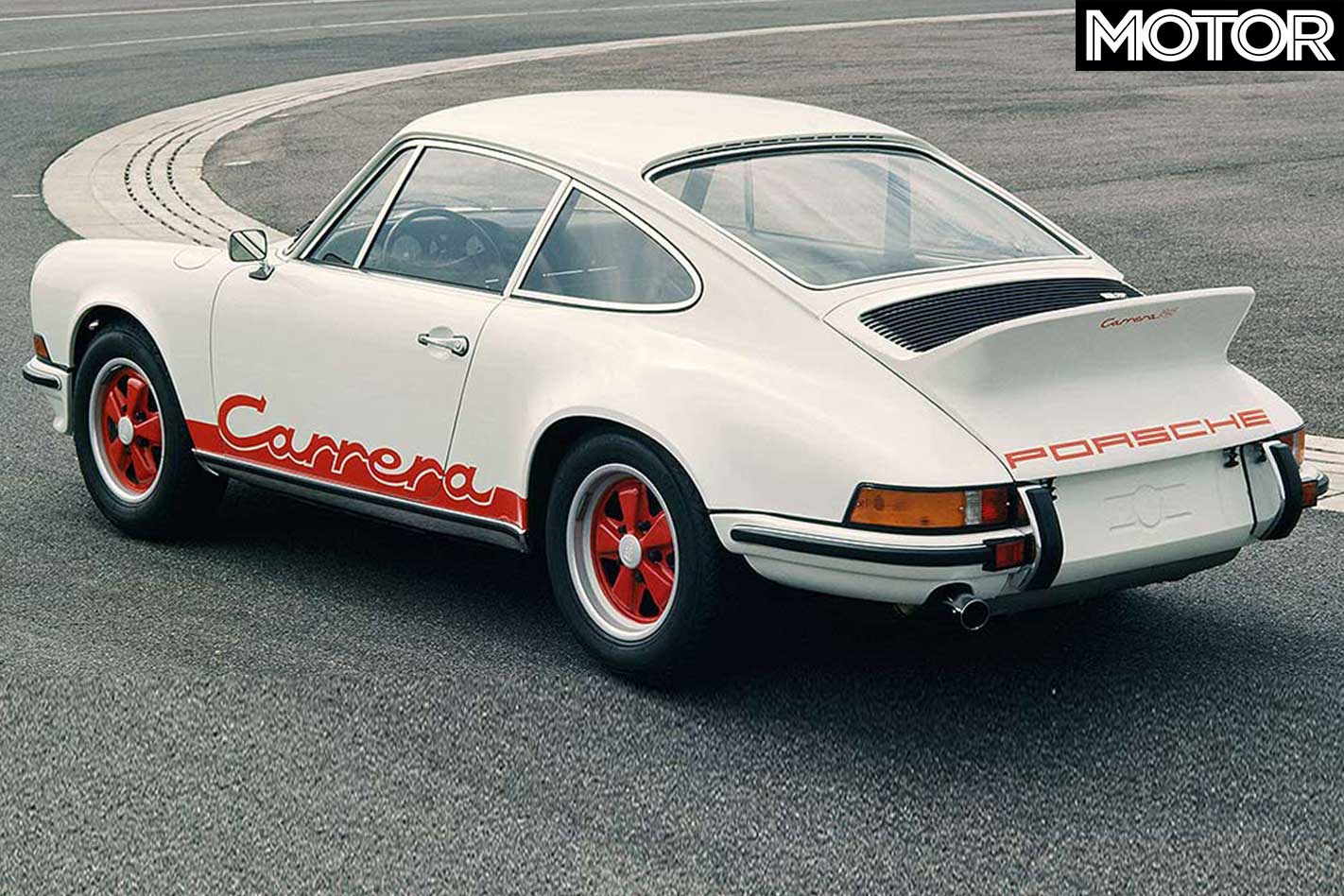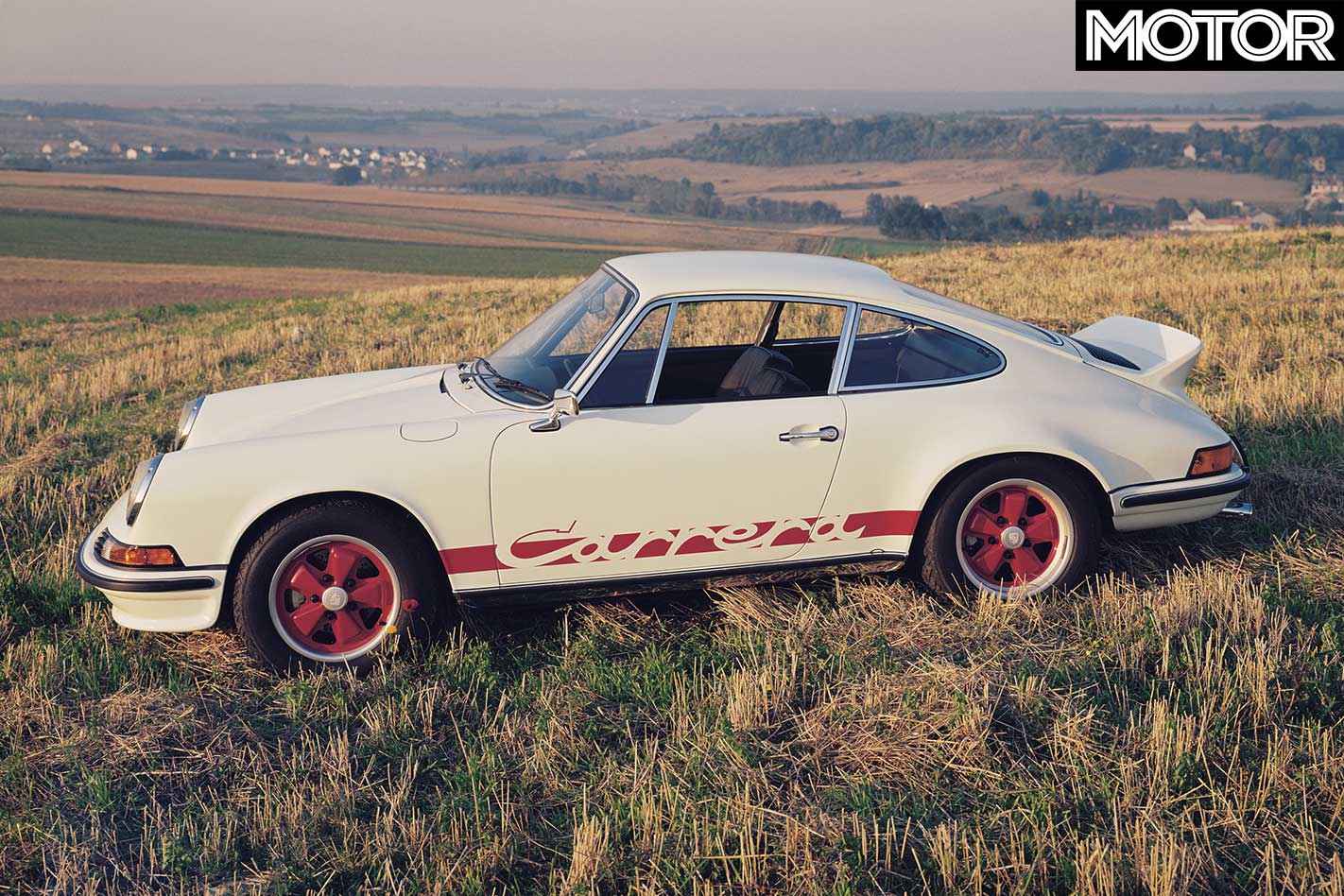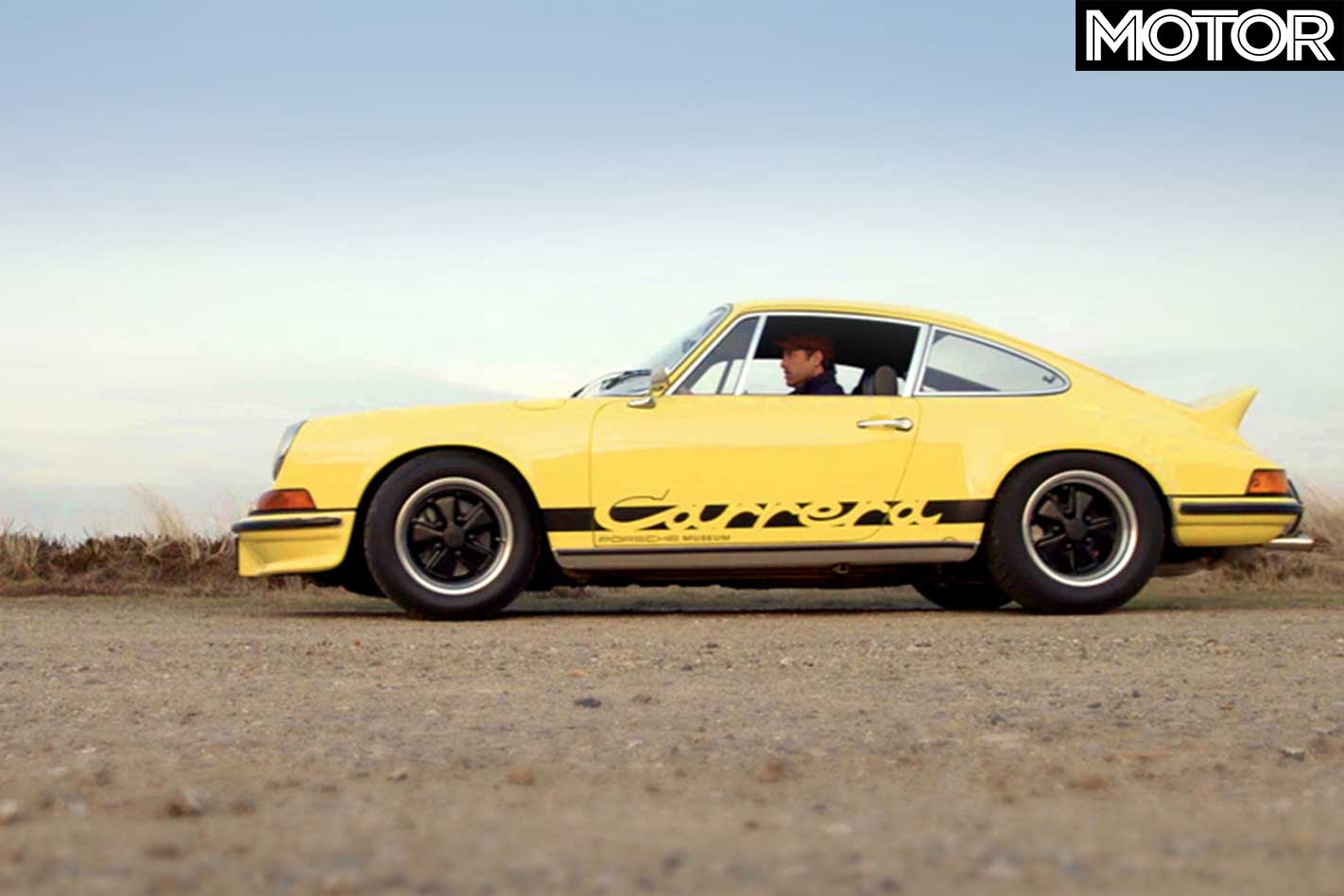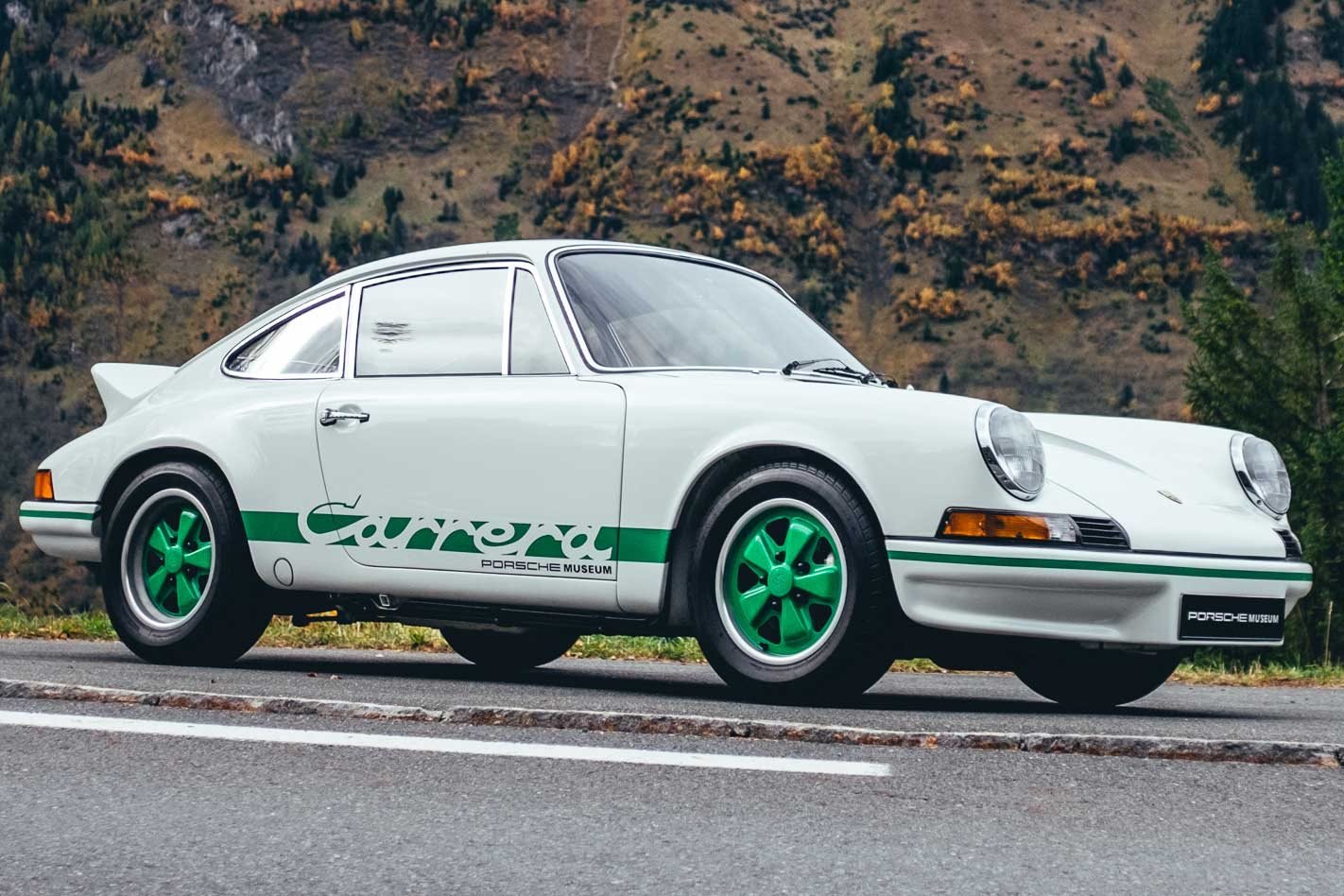A decade after the 1963 Frankfurt show debut of Porsche’s new sports coupe, the model that came to be regarded as the definitive 911 arrived, born out of motorsport homologation.
The Neunelfer (nine eleven), had evolved from sketches done by Ferdinand ‘Butzi’ Porsche in 1959 and was intended as a larger, more powerful 356 successor. It soon established a reputation as one of the world’s most successful racing cars.

RS stood for the German Rennsport (‘racing sport’) and the Carrera 2.7 was homologated for the FIA Group 4 Grand Touring category, which called for the production of 500 cars. Based on the contemporary 911S, the RS 2.7 is the classic ‘big engine in a small car’ approach to building a racecar for the road.
A fibreglass front bumper/chin spoiler and rear ‘duck-tail’ spoiler/engine cover created the unmistakable RS 2.7 silhouette and broader wheel arches allowed an increase in rim size and larger disc brakes. Revised, stiffer suspension lowered the RS’s centre of mass.
Completing the power-to-weight puzzle is a 2687cc, Bosch Kugelfischer mechanically fuel-injected flat-six (346cc larger than that of the 911S) producing 154kW.
In ‘M472’ RS Touring form the Carrera weighed just 1075kg, but the ‘M471’ Sport Lightweight option trimmed a whopping 100kg. Gone were underbody coating, sound insulation, rear seats, passenger sun visor, coat hooks, clock, door sill trims, door handles, glovebox lid and carpet and the windscreen was made of thinner glass.

Early RS 2.7’s also got slightly thinner 0.8mm gauge steel in the body instead of the 0.88mm steel used in later cars.
Porsche initially took orders for just 51 Carrera RS 2.7’s when it was shown at the 1972 Mondial de l’Automobile in Paris, fueling concern about selling a stripped-out racer as a road car. And could they shift all 500 without the key US market where the RS did not meet emissions legislation?
But the first 500 sold and Porsche learned that buyers will pay extra to join an exclusive club. Still, nervousness about the bare bones RS was obvious because the more richly upholstered 911S interior and luxuries like a sunroof and electric radio antenna were options. A total of 1580 RS 2.7’s were built and today the 200 lightweights command top dollar.
Yet they were basic transport, and there was a distinct lack of equipment in the black-on-black RS cabin, just a thinly padded bucket seat, plain four-spoke steering wheel and a simple spherical knob topping the gear lever.

However, a twist of the key brings that evocative, guttural exhaust note and the sound of a belt-driven fan whirring away behind the cabin, keeping the engine cool.
At speed there’s an unmistakable rear-engined feel to the RS 2.7’s handling that demands a different driving style. A judiciously timed lift on corner entry to shift weight forward and provoke oversteer, sets up the car to hit apexes in style.
The flexible flat-six generates surprising mid-range acceleration, aided by the car’s low weight. Power out is modest by modern standards and you must use momentum to unstick the rear before adding throttle from the apex to maintain cornering attitude and power out in a gentle drift, inside front wheel cocked as the RS squats on its outside rear.
In funky, bright ’70s colours with classic Fuchs wheels, duck-tail spoiler, and (optional) Carrera decals, the 911 Carrera RS 2.7 is a pure driver’s car and the quintessential 911.
PORSCHE 911 CARRERA RS 2.7 SPECS Year: 1973 Production: 1580 Engine: 2687cc flat-six, rear-mounted Power/Torque: 154kW/255Nm Transmission: 5-speed manual Drive: rear 0-100km/h: 6.3sec Price: AUD$27,000 (new, approx)





